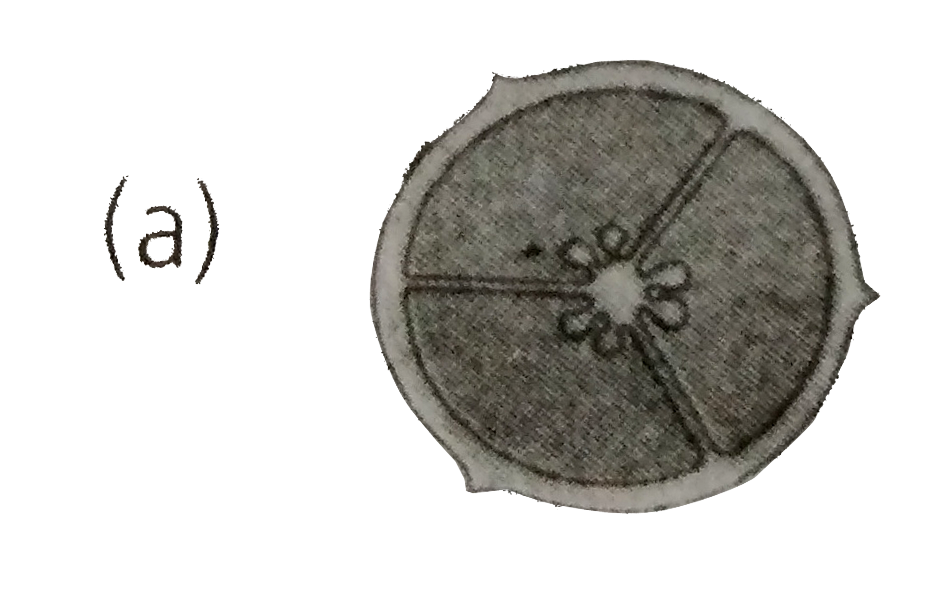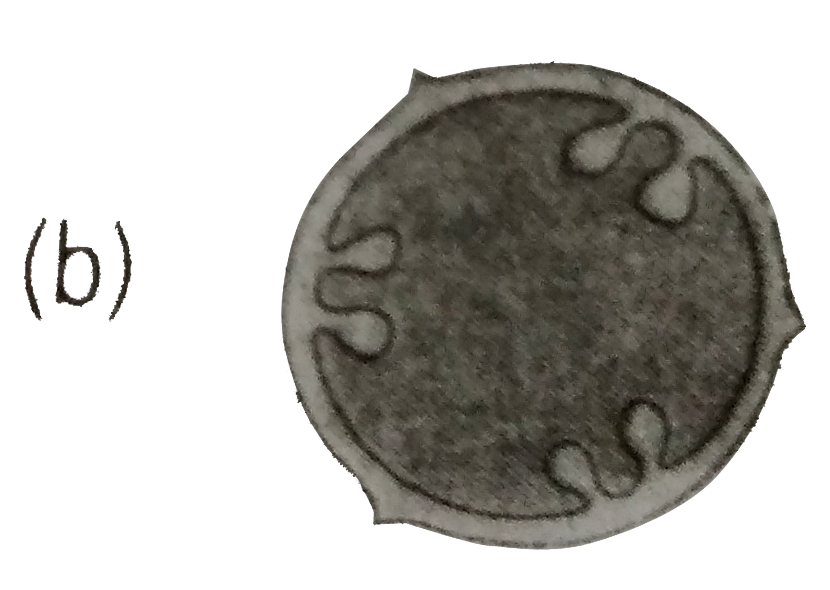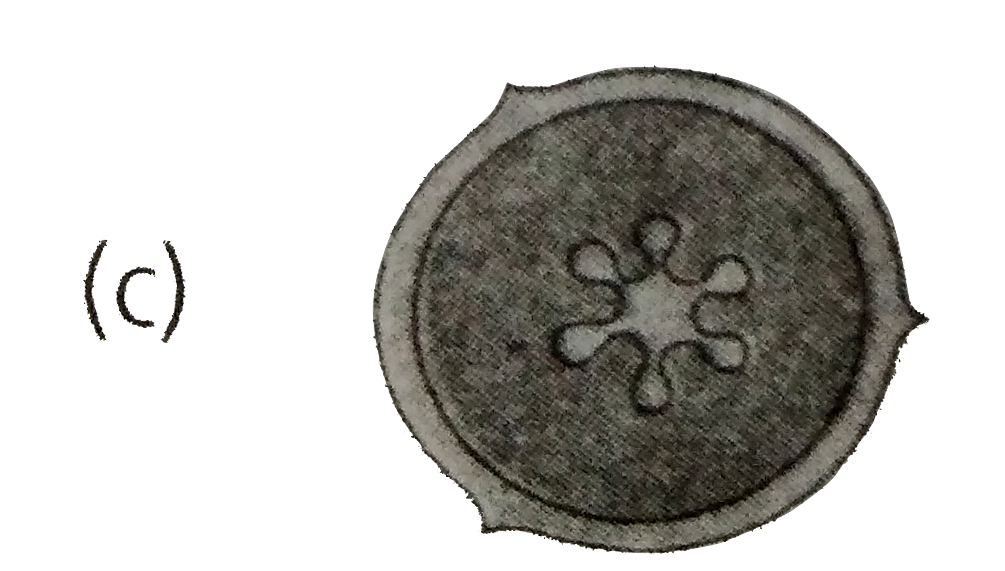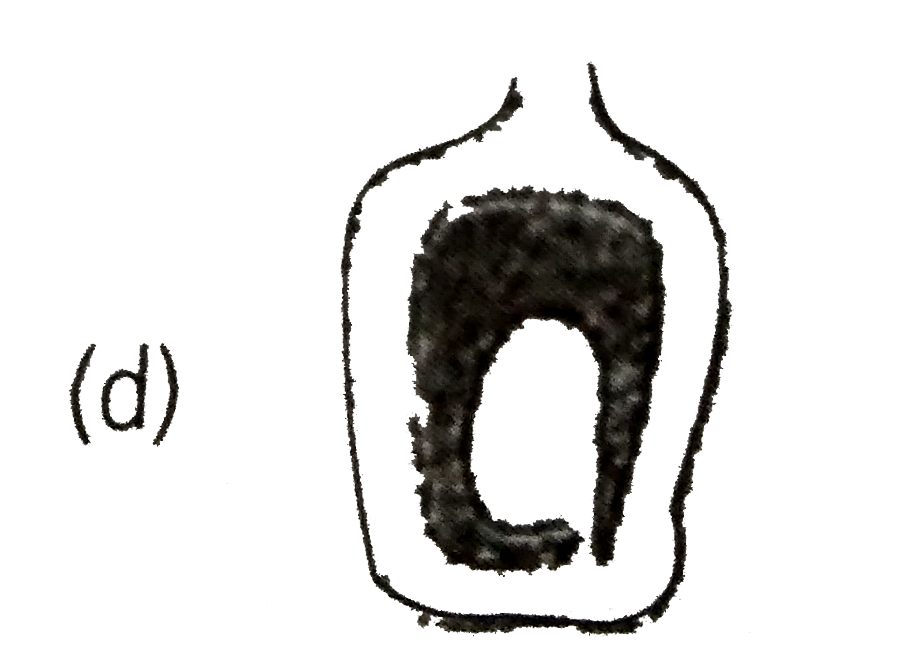Which of these properties are seen in Hibiscus rosa - sinensis ?
(i) Leaves with alternate phyllotaxy
(ii) Polycarpellary syncarpous inferior ovary
(iii) Twisted aestivation in petals
(iv) Basal placentation of ovules
i and ii
iii and iv
i and iii
ii and iv
The correct Answer is:C
To determine which properties are seen in Hibiscus rosa-sinensis, we will evaluate each of the given statements one by one.
1. Leaves with Alternate Phyllotaxy:
- Hibiscus rosa-sinensis exhibits leaves that are arranged alternately on the stem. This means that the leaves do not grow directly opposite each other but rather in a staggered pattern along the stem.
- Conclusion: This statement is true.
2. Polycarpellary Syncarpous Inferior Ovary:
- In Hibiscus rosa-sinensis, the ovary is actually superior, not inferior. The term "polycarpellary" refers to the presence of multiple carpels, which is correct, but since the ovary is not inferior, this statement is false.
- Conclusion: This statement is false.
3. Twisted Aestivation in Petals:
- The petals of Hibiscus rosa-sinensis exhibit twisted aestivation, which means that the petals overlap each other in a twisted manner when they are in bud form.
- Conclusion: This statement is true.
4. Basal Placentation of Ovules:
- Hibiscus rosa-sinensis does not have basal placentation; instead, it has axile placentation. This means that the ovules are attached to the central axis of the ovary.
- Conclusion: This statement is false.
Summary of the Findings:
- (i) True: Leaves with alternate phyllotaxy
- (ii) False: Polycarpellary syncarpous inferior ovary
- (iii) True: Twisted aestivation in petals
- (iv) False: Basal placentation of ovules
Final Answer:
The properties seen in Hibiscus rosa-sinensis are (i) and (iii).
---
- Hibiscus rosa-sinensis exhibits leaves that are arranged alternately on the stem. This means that the leaves do not grow directly opposite each other but rather in a staggered pattern along the stem.
- Conclusion: This statement is true.
- In Hibiscus rosa-sinensis, the ovary is actually superior, not inferior. The term "polycarpellary" refers to the presence of multiple carpels, which is correct, but since the ovary is not inferior, this statement is false.
- Conclusion: This statement is false.
- The petals of Hibiscus rosa-sinensis exhibit twisted aestivation, which means that the petals overlap each other in a twisted manner when they are in bud form.
- Conclusion: This statement is true.
- Hibiscus rosa-sinensis does not have basal placentation; instead, it has axile placentation. This means that the ovules are attached to the central axis of the ovary.
- Conclusion: This statement is false.
- (i) True: Leaves with alternate phyllotaxy
- (ii) False: Polycarpellary syncarpous inferior ovary
- (iii) True: Twisted aestivation in petals
- (iv) False: Basal placentation of ovules
The properties seen in Hibiscus rosa-sinensis are (i) and (iii).
Similar Questions
Select the characters which are not applicable to the family solanaceae
(i) Epipetalous and syngenesious anthers
(ii) Bicarpellary and syncarpous ovary
(iii) Oblique ovary with axile placentation
(iv) Stamens six, arranged in two whorls
(V) Bicarpellary, syncarpous and inferior ovary
View SolutionWhich of the following characters are seen in sharks ?
(i) Body is streamlined and mouth is terminal .
(ii) Gill slits are not covered by operculum .
(iii) Skin is tough ,containig minute placoid scales .
(iv) many of them are oviparous .
View Solution
Knowledge Check
Which of the following figures represents a typical placentation as seen in Hibiscus rosa sinensis (China rose)?
A B
B C
C D
D
Which of the following statements is/are correct ?
(i) Endothecium lies below epidermis
(ii) Fusion of egg with male gamete is called apogamy
(iii) Synergids are haploid.
(iv) The point at which funicle touches the ovule is raphe.A(i) and (iv)B(i) and (ii)C(i) and (iii)D(ii) and (iii)Read the following statements about menstrual cycle and select two correct statements:
(i). Lack of menstruation may be indicative of pregnance
(ii). The changews in the ovary and the uterus are induced by changes in the lveles of ovarian hormones only
(iii). LH suge induces ovulation
(iv). If fertilisation occurs, corpus luteum degenerates immediatelyA(i) and (ii)B(ii) and (iii)C(i) and (iii)D(ii) and (iv)
(a) Draw a diagrammatic sectional view of the female reproductive system of human and label the parts
(i) where the secondary oocytes develop
(ii) which helps in collection of ovum after ovulation
(iii) where fertilization occurs
(iv) where implantation of embryo occurs.
(b) Explain the role of pituitary and the ovarian hormones in menstrual cycle in human females.
View Solution(a) Draw a diagrammatic sectional view of the female reproductive system of human and label the parts
(i) where the secondary oocytes develop
(ii) which helps in collection of ovum after ovulation
(iii) where fertilization occurs
(iv) where implantation of embryo occurs.
(b) Explain the role of pituitary and the ovarian hormones in menstrual cycle in human females.
View SolutionWhich of these properties are seen in both facilitated diffusion as well as active transport ?
I. Requires ATP for energy .
II. Highly selective process .
III. Occurs against the concentration gradient.
IV. There occurs transport saturation .
View SolutionWhich of the following statements is/are correct ?
(i) Endothecium lies below epidermis
(ii) Fusion of egg with male gamete is called apogamy
(iii) Synergids are haploid.
(iv) The point at which funicle touches the ovule is raphe.
View SolutionWrite floral formula for a flower which is bisexual, actinomorphic sepals five, twisted aestivation, petals five valvate aestivation, stamens six, ovary tricarpellary, syncarpous , superior, trilocular with axile placentation.
View Solution